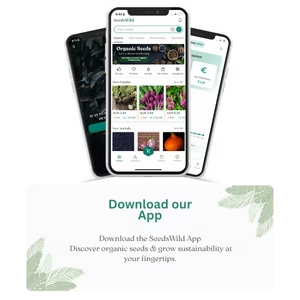In permaculture, nothing is left to chance — some plants grow better together, while others compete.
Companion planting is the art of pairing vegetables, flowers, and herbs that help each other thrive: repelling pests, attracting pollinators, and enriching the soil.
👉 In this SeedsWild guide, discover the winning plant combinations for a balanced, resilient, and organic garden inspired by permaculture.
1. What Is Companion Planting?
Companion planting is based on the idea that plants interact — through their roots, scents, and even micro-organisms.
Some pairings are synergistic: one plant deters pests or provides nutrients for another.
It’s an eco-friendly technique that reduces the need for chemicals and strengthens the resilience of your vegetable garden.
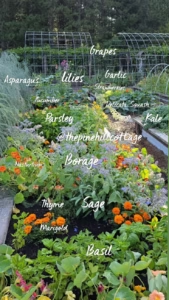
2. The Core Principles of Plant Associations
- Root and leaf complementarity — alternate tall crops (corn, tomatoes) with low ones (lettuce, radish).
- Natural pest control — combine aromatic plants (basil, onion, marigold) with sensitive vegetables.
- Diversity = balance — the more diverse your garden, the fewer pests you’ll face.
Crop rotation by family — avoids soil exhaustion and fungal disease.
3. Table of Beneficial and Incompatible Plants
This companion chart helps you visualize which vegetables thrive together — and which combinations to avoid
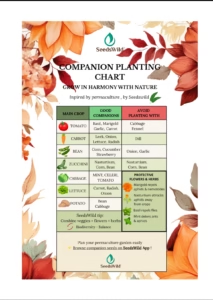
4. Protective Flowers and Aromatic Herbs
Flowers and herbs are powerful natural allies 🌸
- 🌼 Marigold & French marigold — repel aphids and nematodes.
- 🌸 Nasturtium — attracts aphids away from vegetables.
- 🌿 Basil — keeps whiteflies off tomatoes.
- 🌿 Mint — deters ants and aphids.
- 🌸 Borage — attracts bees and boosts pollination.
👉 These companion plants are essential for functional biodiversity in the SeedsWild garden.
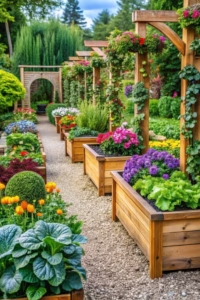
5. Example of a Permaculture Garden Layout
🌿 Example layout for 10 m²:
- Bed 1: Tomatoes + basil + marigold
- Bed 2: Carrots + leeks + lettuces
- Bed 3: Climbing beans + corn + nasturtiums at the base
- Bed 4: Cabbages + mint + borage
💡 This design combines diversity, rotation, and plant synergy — the foundations of permaculture.
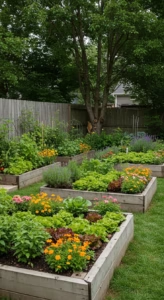
6. 🌾 Ready to Design Your Own Companion Garden?
Start your own biodiversity-friendly garden 🌱 —
👉 Explore SeedsWild’s companion planting collection and design your sustainable ecosystem today.”
SeedsWild offers a selection of organic, open-pollinated seeds specially chosen for companion planting.
📦 100% organic, biodiversity-friendly, and perfect for resilient, productive gardens.
🌿 Continue Your Permaculture Journey
Grow deeper into the SeedsWild world of biodiversity, soil care, and regenerative design:
👉 Permaculture & Sustainable Gardening — The Complete Guide
👉 Permaculture: Key Principles + 50 m² Design Plan
👉 Raised Garden Bed — Dimensions, Soil Mix & Planting Plan
👉 Top 15 Pollinator-Friendly Flowers for 2025
👉 Nettle & Homemade Fertilizer — Feed the Soil Naturally
👉DIY Compost: 6 Essential Steps to Rich, Living Soil
🌱 Every seed, every flower, every compost pile is part of the same circle of life.Keep growing with SeedsWild .
Key References
- Bill Mollison & David Holmgren — Permaculture: Principles & Pathways.
- INRAE — Crop associations and agroecological management.
- Brin de Paille Association — Companion planting and permaculture training in France.

